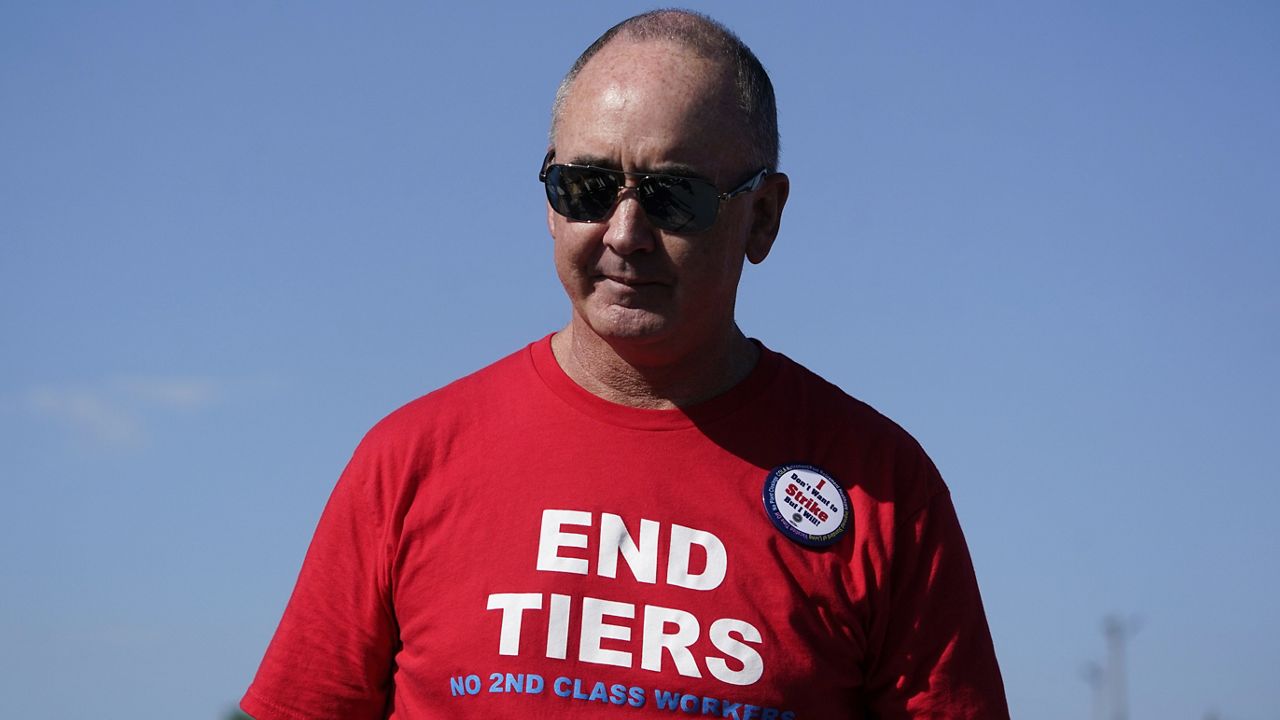With less than 12 hours to go before a possible strike, United Auto Workers President Shawn Fain released a YouTube video explaining the union’s strategy should the two sides fail to reach a deal.
Fain has been negotiating on behalf of his union’s 150,000 workers since July, meeting individually with General Motors, Ford and Stellantis on a new contract to replace the one that expires Sept. 14 at 11:59 p.m. Eastern time, but the two sides remain far apart.
“We are launching a new kind of strike against Ford, GM and Stellantis,” Fain said in a video released Thursday morning. “We’re calling it the stand up strike. This is a strike that starts small and builds over time as more and more of us stand up and join the fight.”
While the union plans to strike all three automakers at once, it will limit and target the strike locations to “keep the companies guessing as to where and when the next local will walk out,” Fain said. Which locations will be targeted will not be announced until 10 p.m. Eastern time Thursday.
As of late Wednesday, Ford had proposed a 20% wage increase. General Motors had offered 18% and Stellantis 17.5%. The UAW is demanding 36%.
At the beginning of their negotiations, the UAW presented each company with a list of 10 demands, including a 32-hour workweek, pension benefits for all workers, cost-of-living increases, restrictions on the use of temporary workers and more paid time off.
“I want to be clear,” Fain said in the video. “Our goal is not to strike. Our goal is to bargain a fair contract, but if we have to strike to win economic and social justice, then we will shut down the big three. We’re not afraid to fight for what we deserve. We will stand up for ourselves. We will stand up for our families.”
Fain is reaching back in history to the UAW’s roots as one of the country’s first labor unions when, in 1937, workers staged a sit down strike, occupying General Motors plants to protest “company thugs, spies and anti-union laws that favor big business.” The group emerged victorious with a new contract and a new union.
“We are once again returning to our roots and reclaiming our tradition of holding a line for working people against unchecked corporate power,” Fain said.
Over the past four years of the current contract, vehicle pries increased 30% and CEO pay increased 40% while worker pay increased 6%.
In late August, 97% of UAW members voted to authorize a strike if the two sides can’t negotiate a deal before the current contract expires. On Monday, the UAW announced it had $825 million in a strike fund and would be able to pay striking members $500 per week for about three months.
A recent study from the Anderson Economic Group estimates a 10-day UAW strike could cost the U.S. economy more than $5 billion.
The last time the UAW struck was in 2019, when 48,000 union workers walked out at 50 General Motors plants for six weeks.



